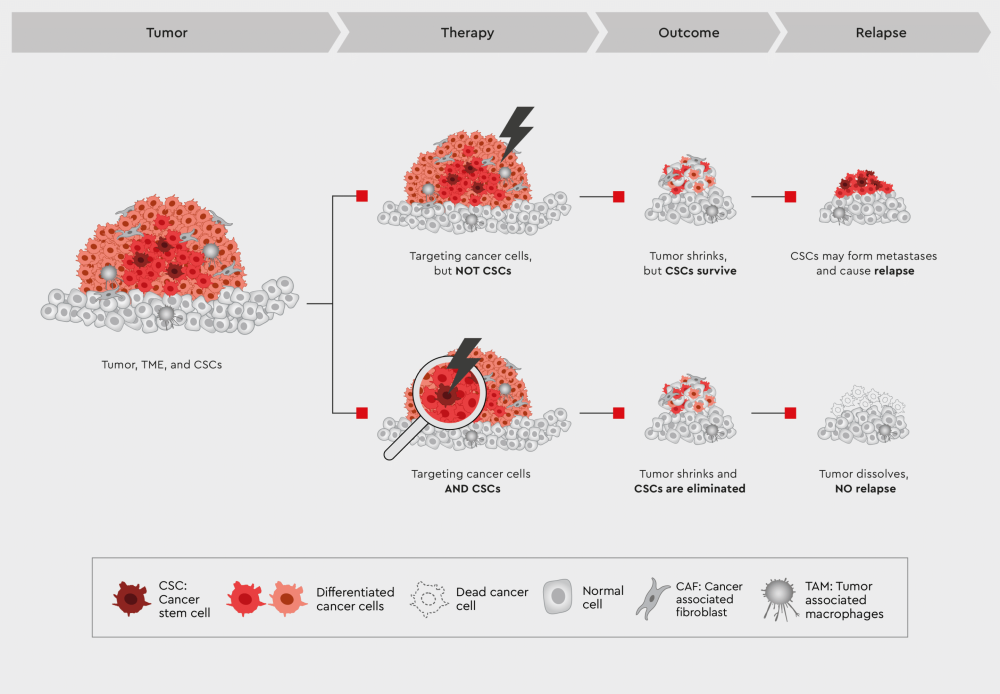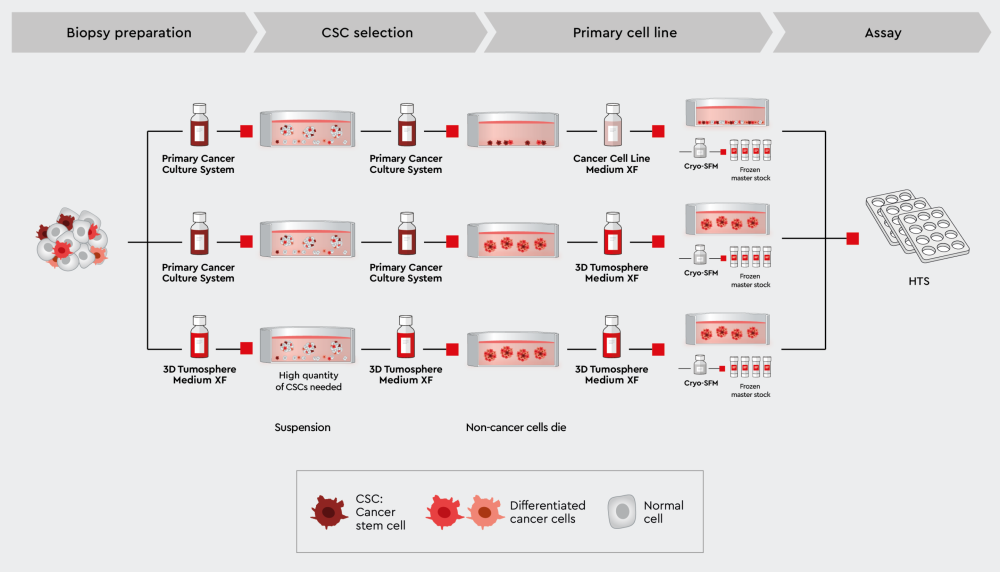
3D Cell Culture
Find suitable products, scientific resources or answers to your questions within our technical library FAQ.
Checkout using your account
This form is protected by reCAPTCHA - the Google Privacy Policy and Terms of Service apply.
Checkout as a new customer
Creating an account has many benefits:
Cancer stem cells (CSCs) are a small subset of tumor cells that are able to evade anti-tumor defense mechanisms and suppress anti-tumor immune responses by releasing soluble immunosuppressive factors, such as anti-inflammatory cytokines. CSCs appear to have multiple strategies to escape immunological destruction, including the acquisition of genetic and non-genetic alterations that reduce immune recognition, enhance tolerance against soluble factors, and promote the establishment of an immunosuppressive tumor microenvironment.
The immunosuppressive features of CSCs and their ability to escape immune responses may contribute to the disappointing efficacy of current adoptive immunotherapies in patients with solid tumors. CSC therapy strategies that combine conventional anti-tumor therapies and CSC-specific immunotherapies are required to effectively eradicate cancer.


Figure 1: Combination of conventional anti-tumor drugs and anti-CSC therapy to treat cancer and prevent metastasis. Targeting CSCs is required to ensure that cancer is eliminated and to prevent treatment resistance and recurrence.
Although CSCs interfere with cancer therapies and eliminating CSCs may improve response to therapy, the development of CSC therapies is challenging for the following reasons:
In the following sections, we describe our toolbox of cancer cell media that allows you to up-scale CSC populations and make them amenable to drug discovery.
Developing assays and high-throughput screening systems with CSCs
Our toolbox of cancer cell media allows for the isolation and selection of CSCs from most tumors, biopsies, and established cancer cell lines – they are in this respect universal. Our cancer cell media are designed to support the maintenance of a healthy CSC population. Hence, our media allows you to establish long-term cultures of CSCs and expand CSCs over many passages to create frozen CSC stocks.
Our toolbox of cancer cell media enables the development of 2D and 3D CSC assays. Depending on the medium used, cancer stem cells can be cultured alone (pure CSC cultures) or co-cultured with other cancer cells, cancer-associated cells, or non-cancer cells.
Our toolbox of cancer cell media consists of the following:
We offer synthetic media that are xeno- and serum-free while containing all the nutrients necessary to maintain healthy and viable cells for a long time or over many passages.
The composition of our media has three advantages:


Figure 2: Workflow for establishing primary CSC lines. Primary Cancer Culture System (PCCS): The purpose of this workflow is to obtain pure CSC lines and early progenitor cancer cells. Depending on their growth characteristics, the generated primary cell lines can be cultured in Cancer Cell Line Medium XF or 3D Tumorsphere Medium XF. 3D Tumorsphere Medium XF: The medium enables the growth of CSCs and non-CSC cancer cells. Depending on the purpose of the assay, the toolbox can be adjusted to establish 3D tumor models with non-cancer cells to preserve the tumor microenvironment.
The workflow shown in Figure 2 can be used to establish primary cancer cell lines containing a healthy CSC population. By supporting the growth of CSCs, our media ensure that the original tumor traits are conserved because CSCs are the tumor initiator and driver. Genotyping data from cell subpopulations cultured in our media confirm that the genotype is conserved throughout the isolation and culturing process.
In summary, our cancer cell media enable the development of drug discovery assays for advanced CSC therapies.
How to use our toolbox for cancer stem cell research
Cell-based assays for drug discovery vary from simple, scalable assays to increasingly more complex assays, such as high-throughput screening libraries and functional assays to characterize hits and optimize promising leads. We describe a range of applications and assays for drug discovery on other websites — check them out or contact our technical service team for further questions:
We’ll help you find the suitable media for your CSC research.
Have a look at other Research Areas